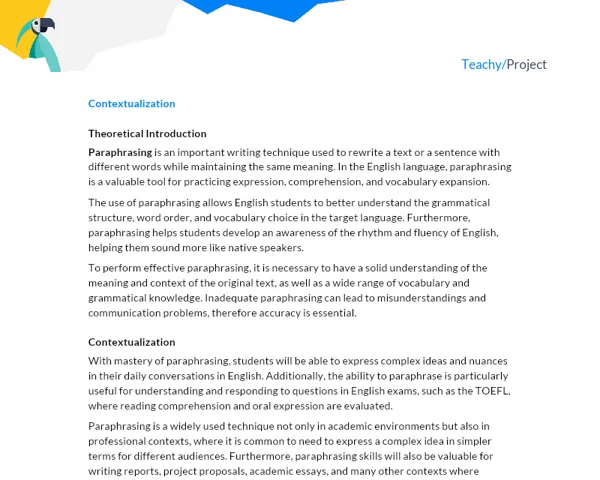Context
Introduction
Hello, young adventurers of the English language! Are you ready to embark on an incredible journey through the Alphabet in English? Shall we begin? Well, the alphabet is the foundation of all written language, and English is no exception! In English, the alphabet consists of 26 letters, each with its own identity and sound. And it is with these 26 letters that we build all the words written in English. Interesting, isn't it?
Importance
Learning the English alphabet is essential for acquiring the language, as it is from it that we are able to identify, read, and write words. Through the knowledge of the letters and the sounds they represent, we are able to form new words, express our ideas, and understand what others are saying or writing.
However, this knowledge is not limited to the English language alone. By learning the English alphabet, you will also be enhancing your ability to recognize and distinguish the sounds of words in Portuguese. This is because many English sounds are similar to those of Portuguese, and by learning these sounds in English, you will also be training your ear to recognize them in your own language.
Therefore, exploring the English alphabet is not only a fun way to learn about the English language, but also an effective way to improve your language skills in general. And that's exactly what we're going to do in this project - explore the English alphabet in a fun and engaging way. Ready? Let's go!
Practical Activity
Activity Title
"Alphabetic Adventure: Exploring the Alphabet in English"
Project Objective
The objective of this project is to explore the English alphabet through practical and playful activities, in order to enhance the understanding and pronunciation of the letters and the sounds they represent.
Detailed Project Description
In this project, students will divide into groups and take on the role of explorers of the English alphabet. Each group will be responsible for researching and presenting about a specific letter of the alphabet. In addition, students will also have to create a keyword and an illustration for each letter, in order to facilitate memorization.
Required Materials
- English textbooks
- Dictionaries
- Paper and pencil for notes
- A4 paper sheets or cardboards for creating illustrations
- Colored pencils, markers, crayons, etc. for coloring the illustrations
- Glue and blunt scissors
Detailed Step-by-Step for Activity Execution
-
Group Formation: Students will be divided into groups of 3 to 5 members. Each group will be responsible for a letter of the English alphabet.
-
Research: Each group must research the letter assigned to them. The research should include information about the sound the letter represents, English words that start with the letter, and any interesting curiosity about the letter.
-
Creation of Keyword and Illustration: Based on the research, each group must choose a keyword that starts with the letter they are studying. This keyword should be easy to remember and should help remember the sound of the letter. In addition, the group must create an illustration that represents the keyword and the letter. The illustration can be colorful and creative!
-
Presentation Preparation: After completing the research and creating the keyword and illustration, the group must prepare a presentation for the class. The presentation should include the exposition of the research, the explanation of the keyword and illustration, and the practice of pronouncing the letter and the sound it represents.
-
Class Presentation: Finally, each group will have the opportunity to present their work to the class. Presentations should be fun and interactive, involving the whole class in learning the English alphabet.
-
Creation of the Alphabet Book: After all presentations, students will gather the illustrations from each group, in alphabetical order, to create an "Alphabet Book". Each student will have a copy of the book to take home and continue exploring and reviewing the English alphabet.
Delivery Format
Each group must deliver to the teacher:
- The keyword written on a paper.
- The colored illustration representing the keyword and the letter.
- A summary of the research conducted.
- The complete "Alphabet Book", containing all the alphabet illustrations.
Remember that the evaluation will not be based solely on the final product, but also on the research process, group collaboration, creativity, and oral presentation. Good luck, alphabet explorers! Let the adventure begin!


